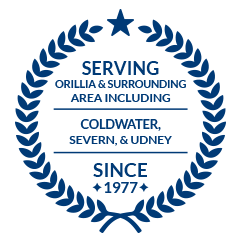What Determines Your Auto Insurance Rates: Factors That Affect Your Premiums
If you are planning on owning a car, you’ll need auto insurance. It not only protects you financially in case of accidents or damages, but it is also required by law. But not all auto insurance policies are the same.
Your premiums are determined by a range of factors that vary from driver to driver. Here we’ll explore the eight main factors that affect auto insurance rates. We will also look at some practical tips to lower the premiums. Let’s take a look!
Factors That Determine Auto Insurance Rates
Here are the eight main factors that are going to determine exactly how much you pay for your auto insurance.
1. Driving Record
Your driving record is one of the most significant factors that impact your auto insurance rates. If you have a history of accidents, speeding tickets, or other traffic violations, your premiums are likely to be higher than someone with a clean driving record.
Insurance companies use your driving history to assess your risk as a driver and determine your likelihood of filing a claim.
2. Credit History
In the US and Canada, many insurance companies use credit scores. People with lower credit scores are more likely to file insurance claims. People with a lower credit score may face higher auto insurance rates than those with higher and good credit scores.
3. Coverage Selections
The amount and type of coverage you choose will affect your auto insurance rates. For instance, if you choose liability-only coverage, your premiums will be lower than if you opt for comprehensive or collision coverage. Similarly, if you choose higher coverage limits, your premiums will increase.
Some common coverage options include:
Liability car insurance – This is the most basic type of car insurance that covers damages you may cause to others in an accident.
Uninsured motorist insurance – This coverage protects you in case you’re in an accident with an uninsured or underinsured driver.
Collision and comprehensive coverage – Collision coverage pays for car repair bills if you get into a car accident, while comprehensive coverage covers non-collision events like theft or weather damage.
Medical expense coverage – This coverage pays for medical expenses incurred by you or your passengers in an accident.
Accident forgiveness – This is an optional coverage that prevents your rates from going up after your first at-fault accident.
Gap insurance – This coverage pays for the difference between the value of your car and the amount you still owe on your car loan or lease if your car is totaled.
Rental reimbursement insurance – This coverage pays for a rental car if your car is being repaired after an accident.
Roadside assistance insurance – This coverage provides services like towing, flat tire changes, and battery jumps if your car breaks down on the road.
Choosing the right coverage options can be challenging, but it’s important to have enough coverage to protect your assets in case of an accident. Be sure to speak with your insurance provider to understand your options and what coverage best fits your needs.
4. Deductible
The deductible is the amount you pay from your pocket before your insurance coverage is effective. If you choose a higher deductible amount, your premiums will be lower.
Choosing a high deductible can be a good strategy to reduce your premiums, but it also means you’ll have to pay more out of pocket in case of an accident. Deductible amounts typically range from $250 to $2,500. so choose wisely.
5. Car Insurance History
Your car insurance history also plays a role in determining your premiums. If you have a history of filing claims or being involved in accidents, your rates will likely be higher than someone with a clean insurance history. Insurance companies will also consider the length of time you’ve been insured and the number of claims you’ve filed.
6. Car Make and Model
Another factor that affects your premiums is the type of car you drive. High-performance or luxury vehicles typically have higher premiums than more practical cars. This is because they are more expensive to repair or replace in case of an accident.
7. Location
Your ZIP code can also affect your auto insurance rates. If you live in an area with high crime rates or high accident rates, you may pay more for insurance than someone who lives in a safer area. Your ZIP code can also impact your rates because some areas may have higher insurance requirements or state minimums.
8. Other Non-Driving Factors
Besides driving-related factors, other non-driving factors can also affect your auto insurance rates. Although they aren’t that important, but they still count. These factors include:
Homeownership – Owning a home can sometimes lead to lower insurance rates because it can indicate stability and responsibility.
Marital status – Married couples may sometimes receive lower rates than single individuals because they are considered to be more responsible.
Education – In some cases, having a higher education level can lead to lower auto insurance rates.
Occupation – Some insurance companies consider your occupation when setting your rates because certain jobs may indicate lower risk, such as those with a shorter commute or a safer work environment.
Tips for Lowering Your Auto Insurance Rates
Are you hoping to save some money on your auto insurance? If so, here are a few important tips.
Shop around for insurance – It’s always a good idea to get multiple quotes from different insurance companies to compare rates and coverage options.
Increase your deductible – Raising your deductible can lower your premiums but remember that you’ll have to pay more out of pocket if you file a claim.
Bundle your insurance – Many insurance companies offer discounts if you bundle multiple policies, such as home and auto insurance.
Maintain a clean driving record – Avoid accidents and traffic violations to maintain a clean driving record, which can help lower your auto insurance rates over time.
Drive a practical car – Choosing a practical car with good safety ratings can help lower your insurance rates.
Final Thoughts
Many factors determine your auto insurance rates. Your driving record, coverage selections, deductible amount and car model affect it more than anything else, while non-driving factors also play a small role in determining your premiums.
By understanding these factors and taking steps to lower your risk as a driver, you can help lower your auto insurance rates and protect your finances.
- Tips for Securing Affordable Cottage Insurance Rates in Ontario
- Cottage Insurance Essentials: Coverage Options Explained
- Understanding Liability Limits in Commercial General Liability Insurance
- How Do I Calculate Business Liability Insurance Needs?
- Is Product Liability Insurance Included in General Liability?
- April 2024
- March 2024
- February 2024
- January 2024
- December 2023
- November 2023
- October 2023
- September 2023
- August 2023
- July 2023
- June 2023
- May 2023
- April 2023
- March 2023
- February 2023
- January 2023
- November 2022
- October 2022
- September 2022
- August 2022
- July 2022
- June 2022
- May 2022
- November 2021
- January 2018
- December 2017
- November 2017
- October 2017
- September 2017
- August 2017
- July 2017
- May 2017
- April 2017




